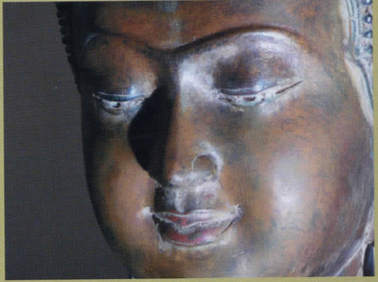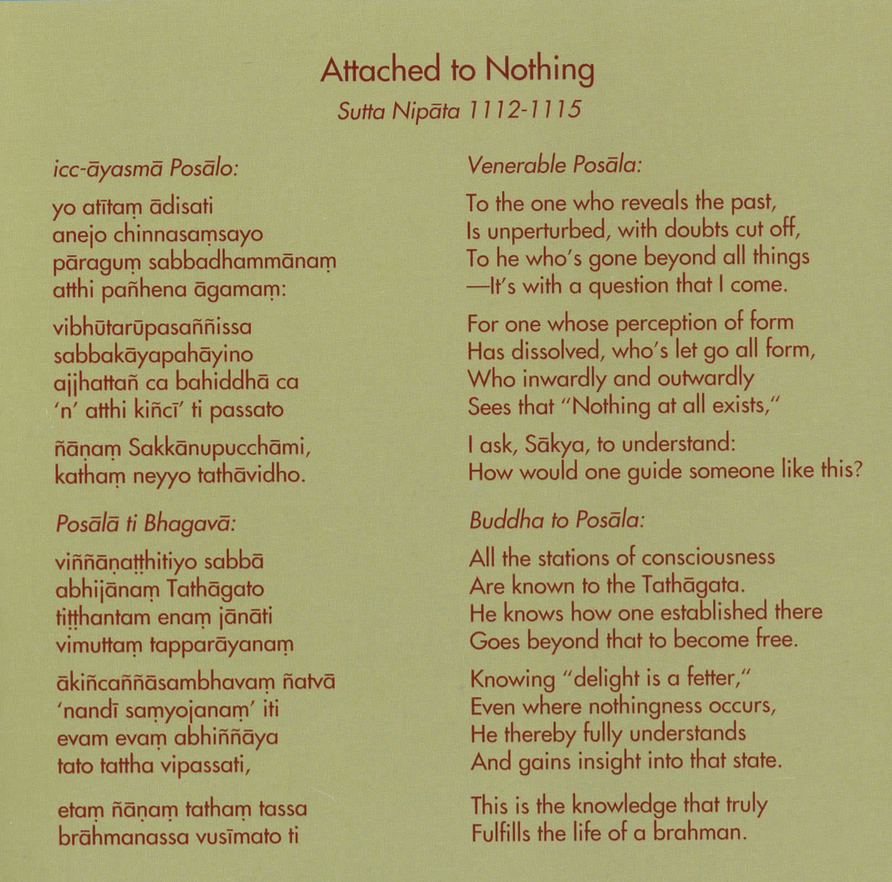This is an archaic poem in the Sutta Nipāta, and the language is thus rather compressed. Existing translations vary widely, and this is my best attempt to make sense of the verses while matching the traditional meter’s eight syllables per line.
 I think Posāla is a yogi of the old school, skilled in attaining formless states of consciousness through intensive concentration practice, including the seventh of the eight stations of consciousness known as “the sphere of nothingness.” This is a mode of consciousness accessible to the advanced meditator in which the conceptual workings of perception become so subtle that no mental construction of form appears to be taking place at all. Some practitioners of the time construed this to be the highest attainment possible, and equated the experience of nothingness with final nirvana.
I think Posāla is a yogi of the old school, skilled in attaining formless states of consciousness through intensive concentration practice, including the seventh of the eight stations of consciousness known as “the sphere of nothingness.” This is a mode of consciousness accessible to the advanced meditator in which the conceptual workings of perception become so subtle that no mental construction of form appears to be taking place at all. Some practitioners of the time construed this to be the highest attainment possible, and equated the experience of nothingness with final nirvana.
Posāla approaches the Buddha respectfully, and seems to be asking about one who attains this state of attenuated consciousness. There is an apparent paradox: An advanced stage of knowing is achieved through yogic meditation, but the content of that state is by definition empty of all discernible forms of knowing.Is this wisdom? He may also be fishing for confirmation that he is in no further need of guidance.
If so he would have been disappointed. The Buddha seems to answer that true knowledge consists of understanding the second noble truth, that desire is the source of suffering, rather than of reaching altered states of consciousness. If the mind has any attachment at all, including a subtle delight in the pleasure of a mind without the clutter of mental objects, it is bound to renewed existence and to the construction of suffering. One needs to go beyond this state to get truly free.
This poem neatly captures the point of diversion between the view of the older yoga meditation practices and the Buddha’s innovative discovery that only insight into the nature of experience results in liberation of the mind from clinging.
